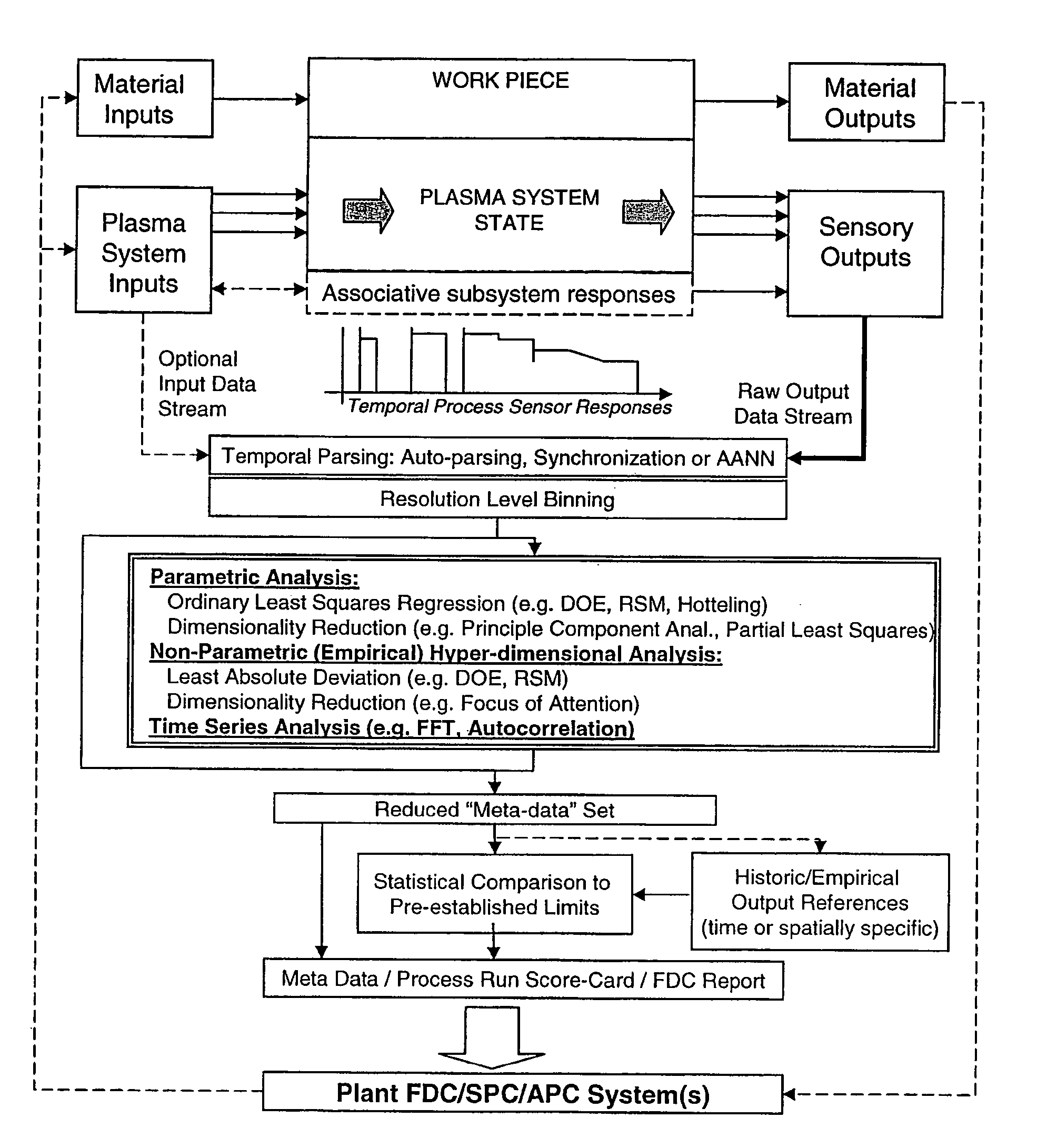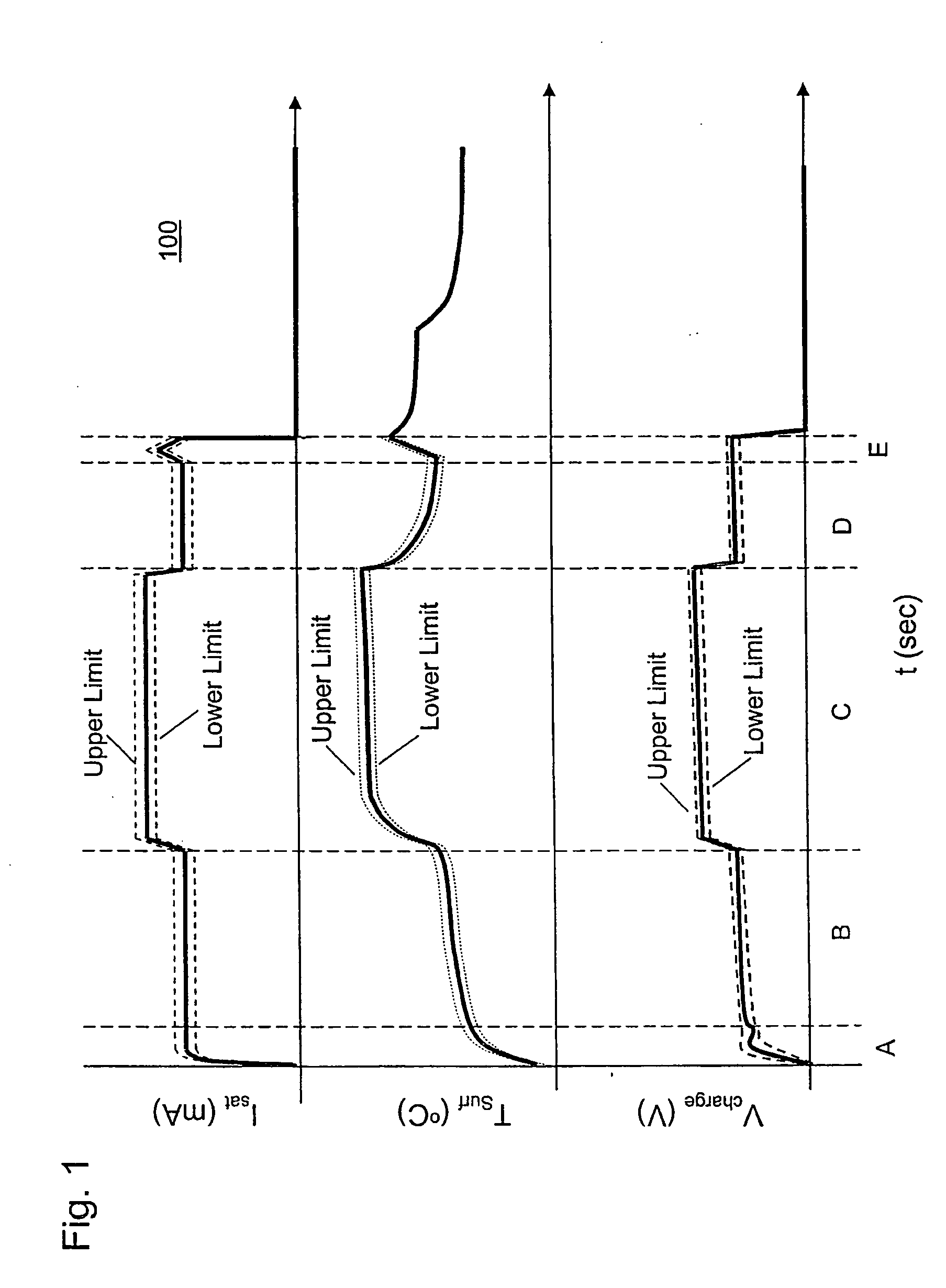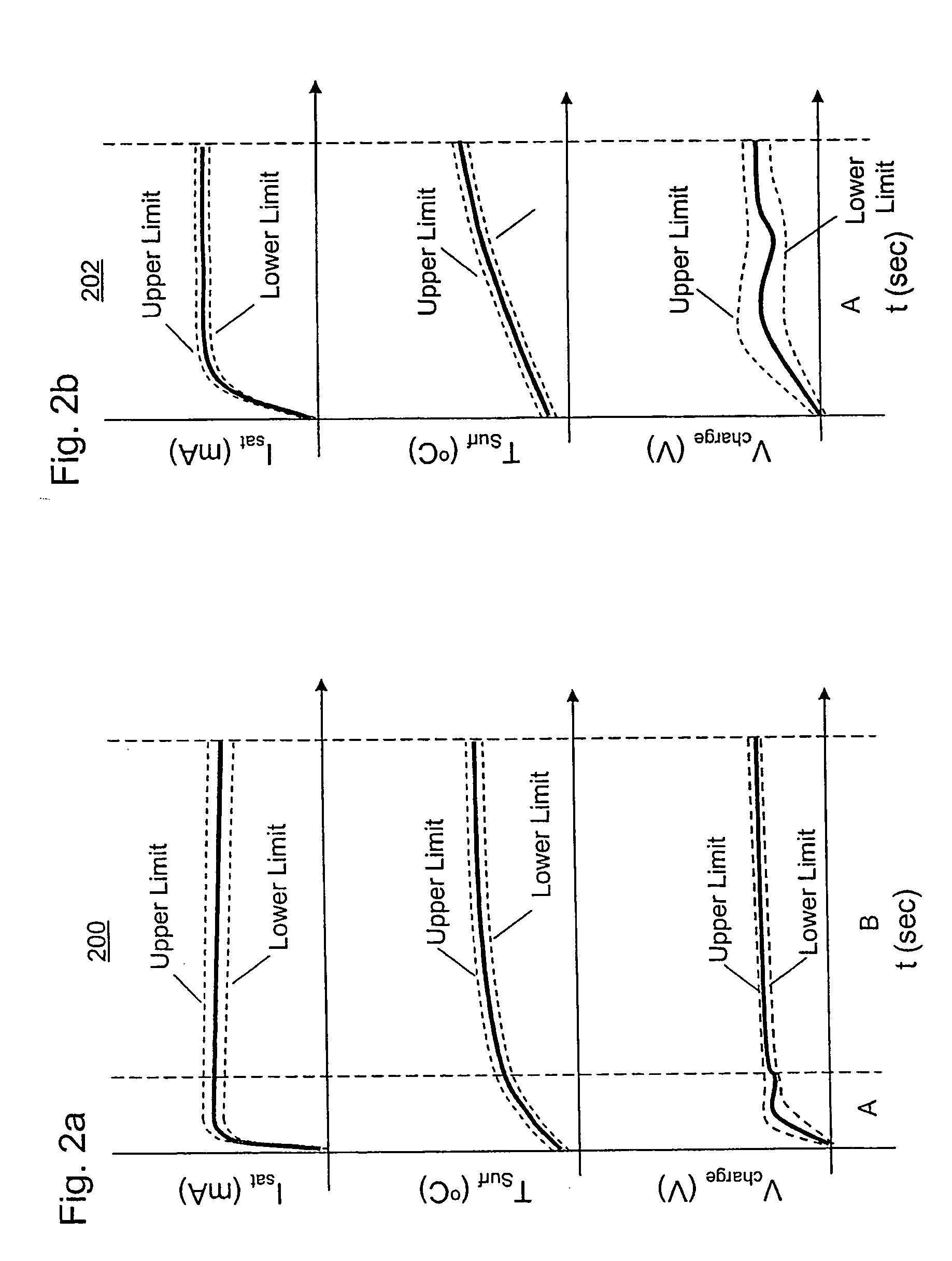Application of in-situ plasma measurements to performance and control of a plasma processing system
a plasma processing system and in-situ plasma technology, applied in the field of in-situ plasma measurement to the performance and control of the plasma processing system, can solve the problems of affecting the outcome of the process, limiting the utility of this approach, and constant challenges in maintaining adequate process yield, etc., to achieve high degree of confidence in accessing variability, increase in resolution, and improve the effect of system measurement response and varian
- Summary
- Abstract
- Description
- Claims
- Application Information
AI Technical Summary
Benefits of technology
Problems solved by technology
Method used
Image
Examples
Embodiment Construction
[0022] In-situ plasma diagnostic devices incorporate sensors and associated electronics for the purpose of obtaining and recording plamsa and substrate surface measurements when disposed into a plasma processing system. The in-situ devices may incorporate several sensors including a dual floating Langmuir probe (DFP) for measuring ion currents, surface charging or electrostatic charge sensors, surface temperature sensors, optical sensors to observe radiated plasma emissions, ion angle sensors and topographically dependent charging sensors to name but a few examples. For purposes of illustrating the method of this invention, a wireless-based wafer apparatus is described having a single DFP sensor, surface temperature sensor and surface charging sensor that can be disposed into a plasma processing system to take spatial and temporal measurements. However, the method also applies to any other in-situ plasma diagnostic device or sensor apparatus. The plasma system used in the illustrati...
PUM
| Property | Measurement | Unit |
|---|---|---|
| Plasma power | aaaaa | aaaaa |
Abstract
Description
Claims
Application Information
 Login to View More
Login to View More - R&D
- Intellectual Property
- Life Sciences
- Materials
- Tech Scout
- Unparalleled Data Quality
- Higher Quality Content
- 60% Fewer Hallucinations
Browse by: Latest US Patents, China's latest patents, Technical Efficacy Thesaurus, Application Domain, Technology Topic, Popular Technical Reports.
© 2025 PatSnap. All rights reserved.Legal|Privacy policy|Modern Slavery Act Transparency Statement|Sitemap|About US| Contact US: help@patsnap.com



